
In the wake of the global pandemic, the landscape of office work has undergone a profound transformation. Gensler’s Work, Life, and the Workplace: A 2023 Survey of Office Workers in Six U.S. States sheds light on the evolving dynamics of work and highlights the pivotal role that physical workplaces play in fostering productivity. As office designers, it’s crucial to grasp the unique factors influencing employee behaviors and preferences, ultimately shaping the future of office design.
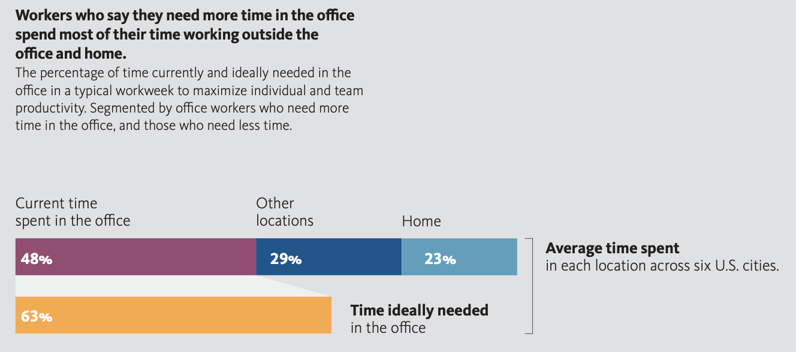
Source: Gensler Research Institute. (2023). Work, Life, and the Workplace: A 2023 Survey of Office Workers in Six U.S.
The survey’s revelations indicate a significant gap between the time office workers currently spend in the office and the time they believe is ideal for maximizing productivity. On average, U.S based office workers spend 48% of their workweek in the office but express the need for 63% to achieve peak productivity. This disparity underscores the importance of creating physical work environments that align with the various needs of employees in the modern workforce.
From these various needs, a few commonalities for wanting to be in the office stand out amongst workers. The primary reason being the need to focus on one’s work, followed by the desire to socialize with colleagues and be part of a community. While the latter sentiments are most prevalent amongst Gen Z workers, 79% of all workers surveyed say “working in the office positively impacts their sense of community and belonging.” Workers also highlight the “ease of communication” and opportunities for “growth and development” that are available in an office setting.
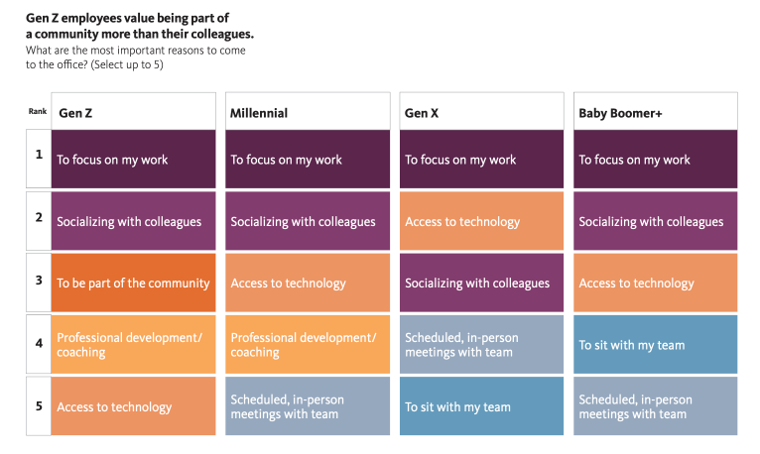
Source: Gensler Research Institute. (2023). Work, Life, and the Workplace: A 2023 Survey of Office Workers in Six U.S.
These feelings are likely emphasized by the fact that almost all (98%) surveyed employees are part of a team at work. The survey identifies the following three archetypes of teams:
- Functional teams, which primarily requiring inter-departmental collaboration
- Project teams, which are, as the name implies, project specific
- Cross-functional teams, which require collaboration across departments.
Functional and project teams spend the least time in the office, though compared to cross-functional teams, they feel the need to spend more time in office in order to maximize both team and individual productivity.
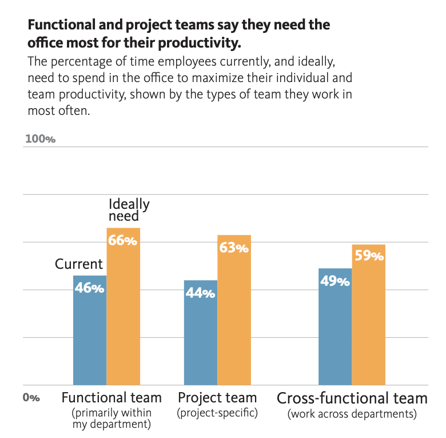
Source: Gensler Research Institute. (2023). Work, Life, and the Workplace: A 2023 Survey of Office Workers in Six U.S.
Now that we understand why employees have a desire to get back to the office, let’s uncover what employers can do to maximize their physical workplaces. The answer, it seems, is access to four key space types with the office:
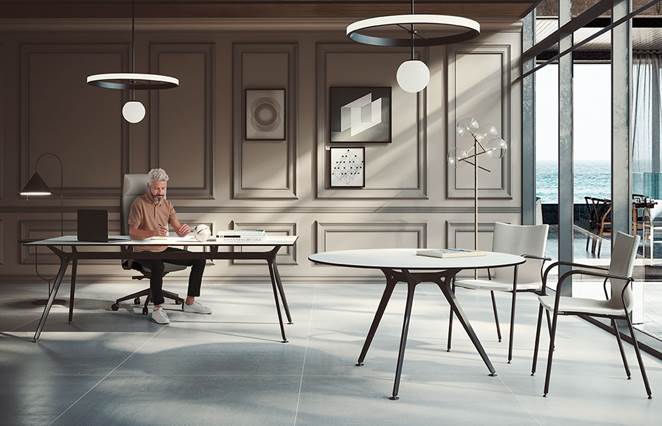
- Spaces for individual work. Ex. Focus room, library, quiet/tech-free zone, etc.
- Spaces for creative group work (in-person and virtual). Ex. Innovation hub, maker space, project/team room
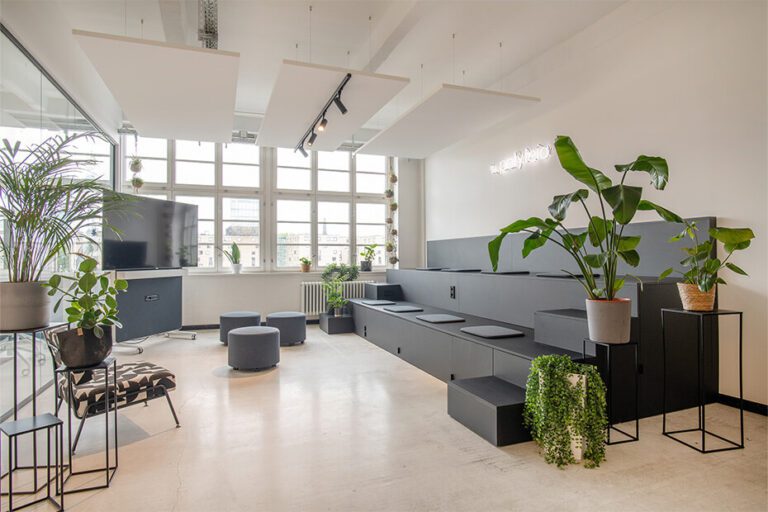

- Spaces to reflect and restore. Ex. Reflection/meditation space, rest area, outdoor workspace.
- Spaces to connect and recharge. Ex. Work cafe, break room/lounge, fitness center.

While 90% of workers have access to at least one of these space types, only 48% have access to all four. This limited access is a disservice to both employees and employers, since workers with more diverse access to spaces are more likely to feel the need to go to the office for productivity.
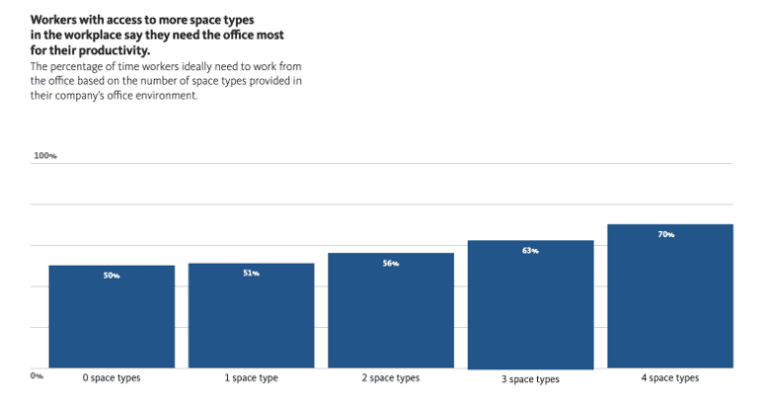
Source: Gensler Research Institute. (2023). Work, Life, and the Workplace: A 2023 Survey of Office Workers in Six U.S.
This proves the importance of thoughtful office design and demonstrates the power employers hold in creating a fulfilling environment in their physical workspaces that meets workers’ diverse needs, fosters productivity, and drives excitement of being present in-person.